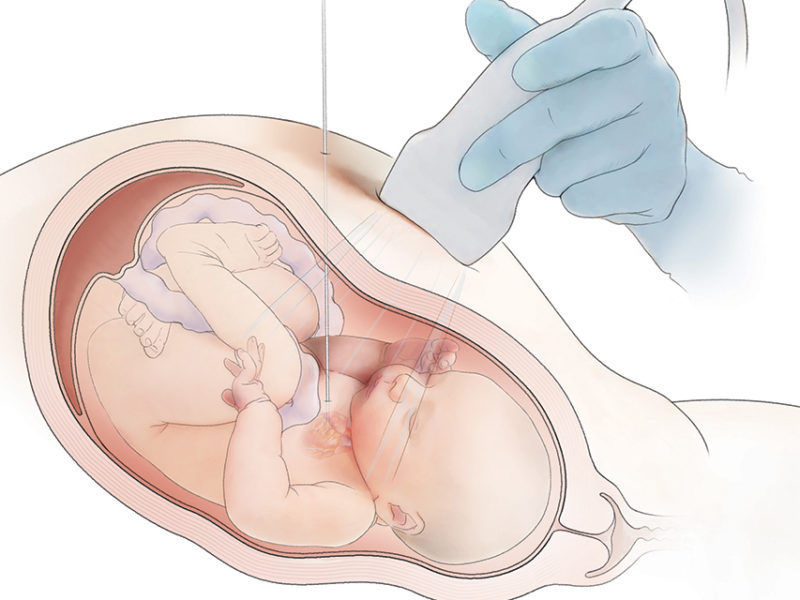Why Do Synthetic Tracheal Replacements Fail?
Why Do Synthetic Tracheal Replacements Fail? https://pediatricsnationwide.org/wp-content/themes/corpus/images/empty/thumbnail.jpg 150 150 Lauren Dembeck Lauren Dembeck https://pediatricsnationwide.org/wp-content/uploads/2021/03/Dembeck_headshot.gif- August 30, 2019
- Lauren Dembeck
Synthetic tracheal replacements experience infectious, inflammatory and mechanical failures.
Tracheal defects in children and adults can often be addressed with current surgical techniques. However, when a defect is large, greater than 50% of an adult windpipe or 30% of a pediatric windpipe, few options exist to repair it without donor tissue.
For decades, tissue engineers have been attempting to address the problem by creating a synthetic trachea.
“The premise behind regenerative medicine and tissue engineering is that you can create healthy tissue identical to the host rather than having to work with diseased, damaged or absent tissue,” says senior author of the study Tendy Chiang, MD, pediatric otolaryngologist of the Department of Otolaryngology and principal investigator in the Center for Regenerative Medicine in the Abigail Wexner Research Institute at Nationwide Children’s Hospital.
However, in nearly all documented cases of humans receiving synthetic tracheal grafts, the outcomes have been poor, usually resulting in death or explantation of the replacement. To understand why these tracheal grafts ultimately fail, Dr. Chiang and colleagues used a large animal model to characterize the long-term regenerative outcomes and the modes of graft failure. The study was recently published in Otolaryngology—Head and Neck Surgery.
The team manufactured and seeded human graft scaffolds with autologous bone marrow-derived mononuclear cells and implanted them into the animal model. Regular postimplantation surveillance and interventions, including endoscopic dilation and stenting to manage graft stenosis, continued for up to four months.
“We replicated the approach that has been performed in human patients to characterize tissue engineered trachea performance in a large animal model of orthotopic graft implantation,” explains Dr. Chiang, who is also an assistant professor in the Department of Otolaryngology – Head and Neck Surgery at The Ohio State University College of Medicine.
Graft stenosis occurred in all animals at both the proximal and distal connections where the graft was joined with the native trachea; however, balloon dilation and stent placement attenuated respiratory symptoms and prolonged survival in some cases. Necropsy revealed infections and graft encapsulation in all cases, and no epithelialization or neovascularization of any graft occurred.
“Our goal now is to define the mechanisms that are causing these grafts to become narrow, as well as what are the mechanisms of epithelialization, lining of these grafts with a functional layer of tissue, so that we can potentially accelerate that process to improve graft incorporation,” says Dr. Chiang.
The team has developed a mouse model to study tracheal implants, and early results are similar to those of the ovine model, explains Dr. Chiang. The team’s current work also includes more detailed studies to identify inflammatory cues and define mechanisms of regeneration and re-epithelialization of the mouse tracheal scaffolds. In addition to synthetic tracheal scaffolds, the researchers are also working with decellularization, a process in which donor cells are removed from tissue effectively leaving a biological matrix that can be repopulated with host cells.
“Our research is a reflection of a strong multidisciplinary team. We are the product of our whole group, which includes a team of engineers, physicians, microsurgeons, basic science researchers, and talented students,” says Dr. Chiang, “Regenerative medicine is the intersection of these specialties working together in what comes as second nature to each of us.”
Reference:
Pepper V, Best CA, Buckley K, Schwartz C, Onwuka E, King N, White A, Dharmadhikari S, Reynolds SD, Johnson J, Grischkan J, Breuer CK, Chiang T. Factors Influencing Poor Outcomes in Synthetic Tissue-Engineered Tracheal Replacement. Otolaryngology – Head and Neck Surgery 2019 Apr 30:194599819844754. doi: 10.1177/0194599819844754. [Epub ahead of print]
About the author
Lauren Dembeck, PhD, is a freelance science and medical writer based in New York City. She completed her BS in biology and BA in foreign languages at West Virginia University. Dr. Dembeck studied the genetic basis of natural variation in complex traits for her doctorate in genetics at North Carolina State University. She then conducted postdoctoral research on the formation and regulation of neuronal circuits at the Okinawa Institute of Science and Technology in Japan.
-
Lauren Dembeckhttps://pediatricsnationwide.org/author/lauren-dembeck/
-
Lauren Dembeckhttps://pediatricsnationwide.org/author/lauren-dembeck/
-
Lauren Dembeckhttps://pediatricsnationwide.org/author/lauren-dembeck/
-
Lauren Dembeckhttps://pediatricsnationwide.org/author/lauren-dembeck/January 29, 2019
- Posted In:
- In Brief







